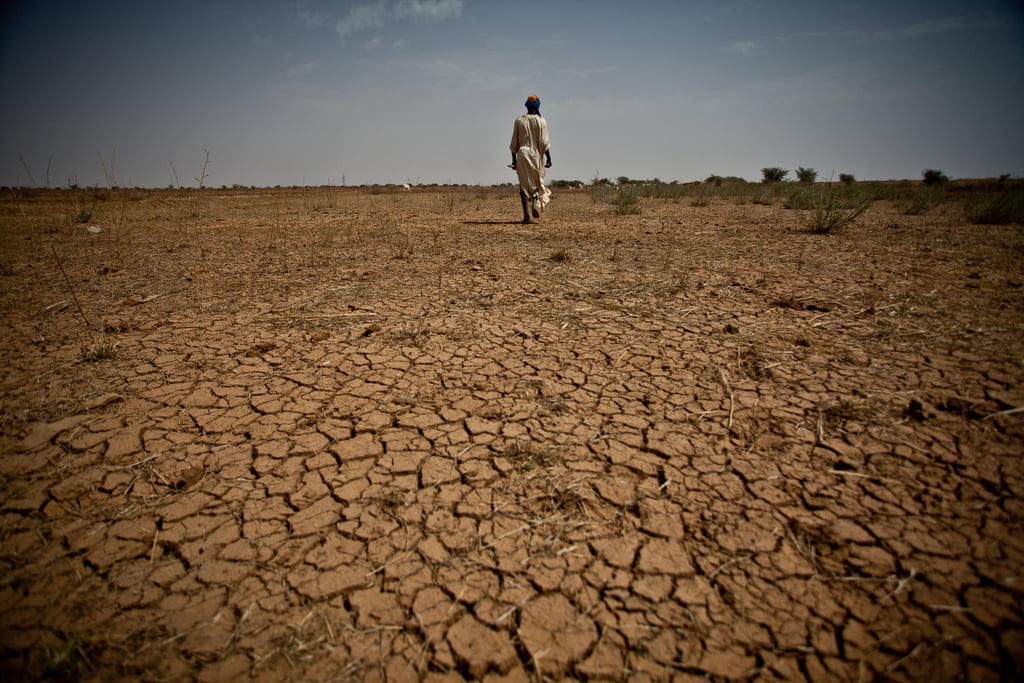By Ciarán Donnelly
There is a climate and humanitarian crisis in the Central Sahel region—and more often than not, these two crises are linked. Mali, Niger, and Burkina Faso are riven by a multifaceted emergency of violent conflict, weak governance, and economic collapse. More frequent adverse weather events add to and fuel these compounded crises — and setback after setback makes it ever harder for people to survive, recover, and adapt.
In a new report from the International Rescue Committee, Climate and Humanitarian Crisis in the Central Sahel, we find that policy decisions taken over centuries until today have resulted in the systematic economic neglect and political marginalization of the peripheries of these states. Political decisions routinely preference economic development in capital regions at the expense of outer-lying communities, concentrating resources and investments in the capitals and failing to diversify the economy. This served to perpetuate reliance on climate-vulnerable sectors, such as livestock and agriculture. As a result, it is in these communities that conflict, climate shocks and humanitarian crises (or some combination of all three) often take hold.
The cumulative impact of these policies is that communities on the periphery are left both impoverished and susceptible to climate change and armed conflict. We see evidence of this throughout the Central Sahel today, where conflict and political exclusion drive a collapse of social services, contributing to economic hardship and food insecurity. Risks to safety and scarcity drive displacement, and climate shocks accelerate and worsen these crises.
The result is soaring humanitarian needs, including food insecurity and displacement.
Over 16 million people in the Central Sahel require humanitarian assistance. Despite accounting for only 0.9% of the global population, the region now represents 5% of global humanitarian needs. Food insecurity has reached alarming levels, affecting more than 5 million people across the three countries and a growing number of malnourished children. Women and girls are disproportionately impacted due to discrimination, violence, and unequal opportunities, exacerbating their vulnerability. Women make up over half of the agricultural labor force in the Central Sahel—reaching nearly 70% in Niger—which means that they bear an undue burden whenever land, water, and resources are critically affected.
Despite the complexity of crises in the Central Sahel, there are ways the humanitarian community and key local and international actors can effectively help alleviate the suffering of affected populations while also addressing the underlying factors that drive the crisis. This requires a renewed focus on communities far from the seat of political power and putting the periphery at the center of our efforts.
First, investing in humanitarian access is essential to ensure that assistance reaches the people who are most impacted. The Central Sahel is a region enmeshed in a variety of armed conflicts — a significant factor contributing to the crisis. Overcoming movement restrictions imposed by authorities and non-state armed groups, improving safety and security, and strengthening logistical infrastructure are necessary steps.
Second, efforts should focus on reducing the economic effects of climate change that fuel conflict over resources. Supporting livelihoods programming and creating opportunities for employment can mitigate factors that contribute to instability. Furthermore, centering social cohesion in peacebuilding efforts can create conditions conducive to building resilience to climate change.
Last, funding that supports climate change adaptation – tailored to the specific challenges of the Central Sahel – is crucial. There is a disparity in climate finance allocation between conflict-affected and non-conflict-affected states, with the former receiving significantly less funding. Climate finance involving local nongovernmental organizations and community-based organizations may have the capacity to sustain access and manage stakeholder relations.
Across our work, communities in fragile and conflict-affected countries – which 1.5 billion people call home – are bearing the brunt of the climate crisis. The people on the frontlines of this crisis urgently need all of us in the climate, development, and humanitarian sectors to work together to deliver scalable solutions across the arc of adaptation, mitigation, and response. As we do this, it is imperative that we give their voices and realities a central place in driving our analysis, decisions, and actions. To do otherwise would make us complicit in their marginalization and exclusion.
Ciarán Donnelly is Senior Vice President for International Programs at the International Rescue Committee
